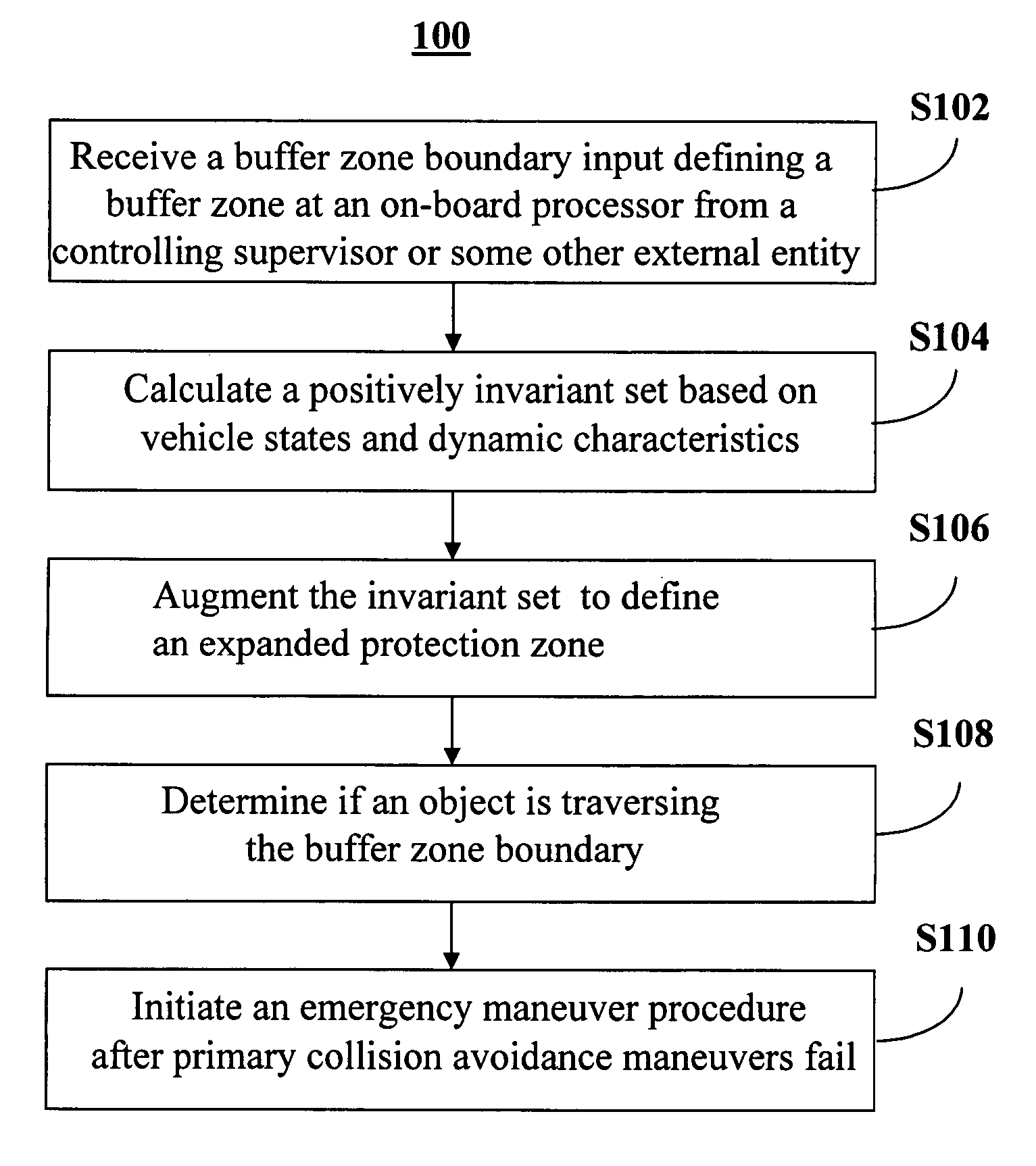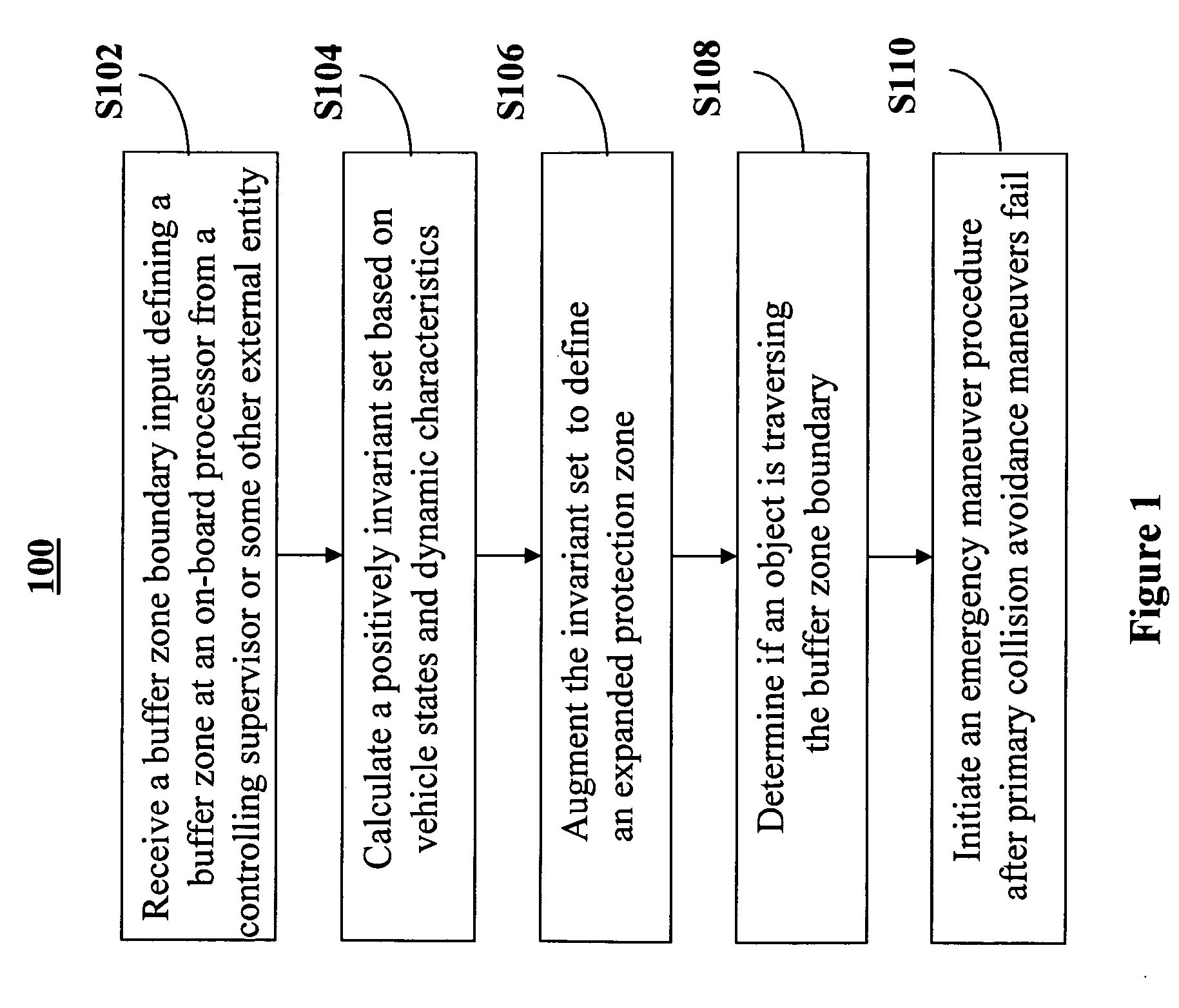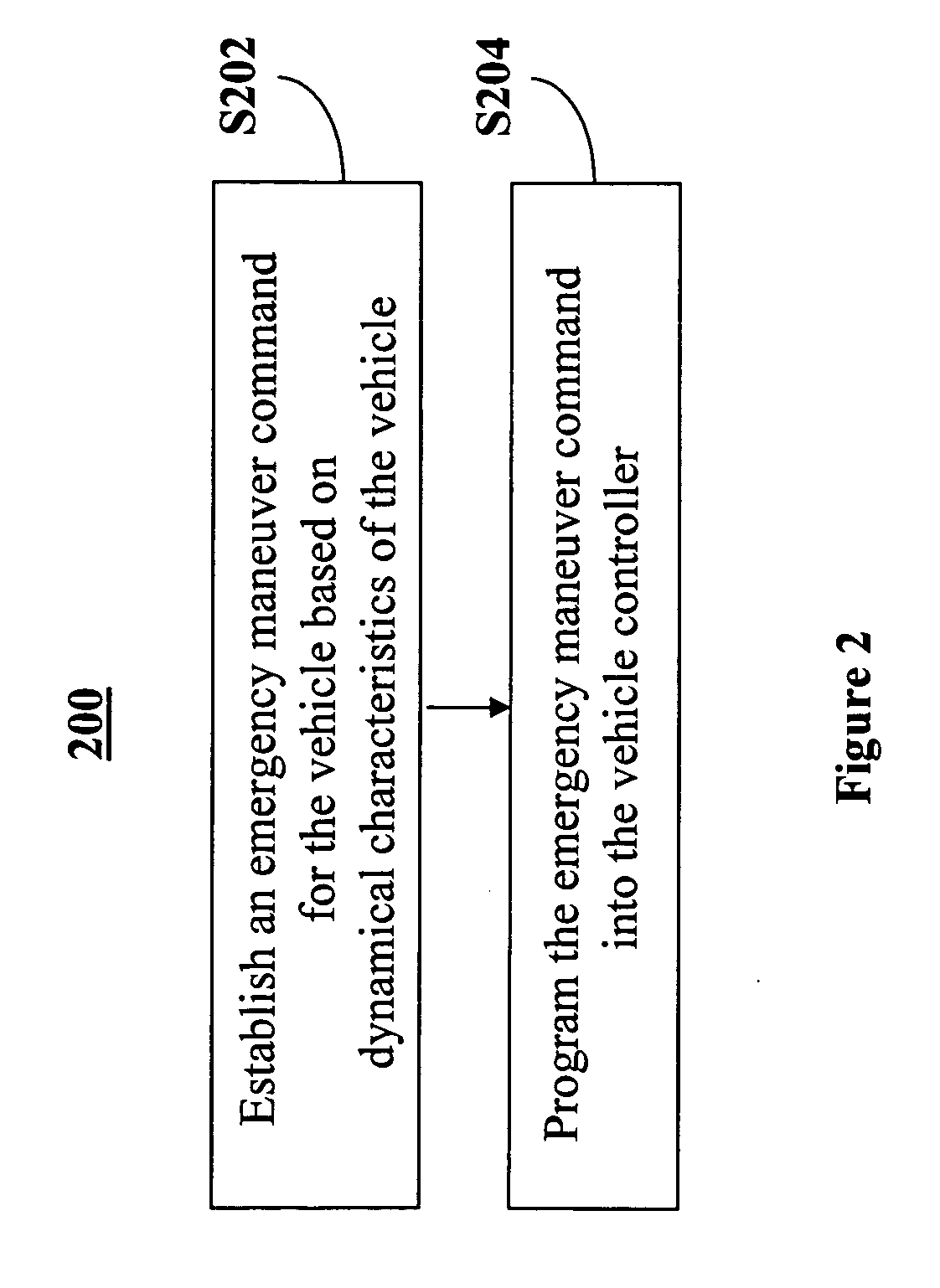System and method of collision avoidance using an invarient set based on vehicle states and dynamic characteristics
a collision avoidance and invariant set technology, applied in the field of collision avoidance systems, can solve the problems of greater collision danger in flight formation, infinite maneuverability of straying vehicles, and greater collision potential
- Summary
- Abstract
- Description
- Claims
- Application Information
AI Technical Summary
Benefits of technology
Problems solved by technology
Method used
Image
Examples
first embodiment
[0069]FIG. 5 is a schematic diagram of zones for a vehicle 105 having a collision avoidance system 10 in accordance with the present invention. The vehicle 105 is at the center of a buffer zone boundary 110 which encloses buffer zone 115. The vehicle's protection zone 125 has a protection zone boundary 120 that is concentric with and enclosed within the buffer zone boundary 110.
second embodiment
[0070] The discussion related to FIGS. 6-9D is based on the exemplary vehicle 100 and vehicle 200 of FIG. 4 in collision avoidance system 10. FIG. 6 is a schematic diagram of zones for a vehicle 100 operable in the collision avoidance system 10 in accordance with the present invention. In this embodiment, the vehicle 100 has the buffer zone 115 and protection zone 125 as described above for vehicle 105 and an additional expanded protection zone 135, that is enclosed within the buffer zone 115 and that encompasses the protection zone 125. The expanded protection zone boundary 130 that defines the limits of the expanded protection zone 135 is concentric with the buffer zone boundary 110 and the protection zone boundary 120.
[0071]FIGS. 7A-7D are schematic diagrams of the vehicle 100 of FIG. 6 initially on a collision path with an object 140 at various times during an implementation of the collision avoidance system 10 in accordance with one embodiment of the present invention. FIG. 7A ...
PUM
 Login to View More
Login to View More Abstract
Description
Claims
Application Information
 Login to View More
Login to View More - R&D
- Intellectual Property
- Life Sciences
- Materials
- Tech Scout
- Unparalleled Data Quality
- Higher Quality Content
- 60% Fewer Hallucinations
Browse by: Latest US Patents, China's latest patents, Technical Efficacy Thesaurus, Application Domain, Technology Topic, Popular Technical Reports.
© 2025 PatSnap. All rights reserved.Legal|Privacy policy|Modern Slavery Act Transparency Statement|Sitemap|About US| Contact US: help@patsnap.com



